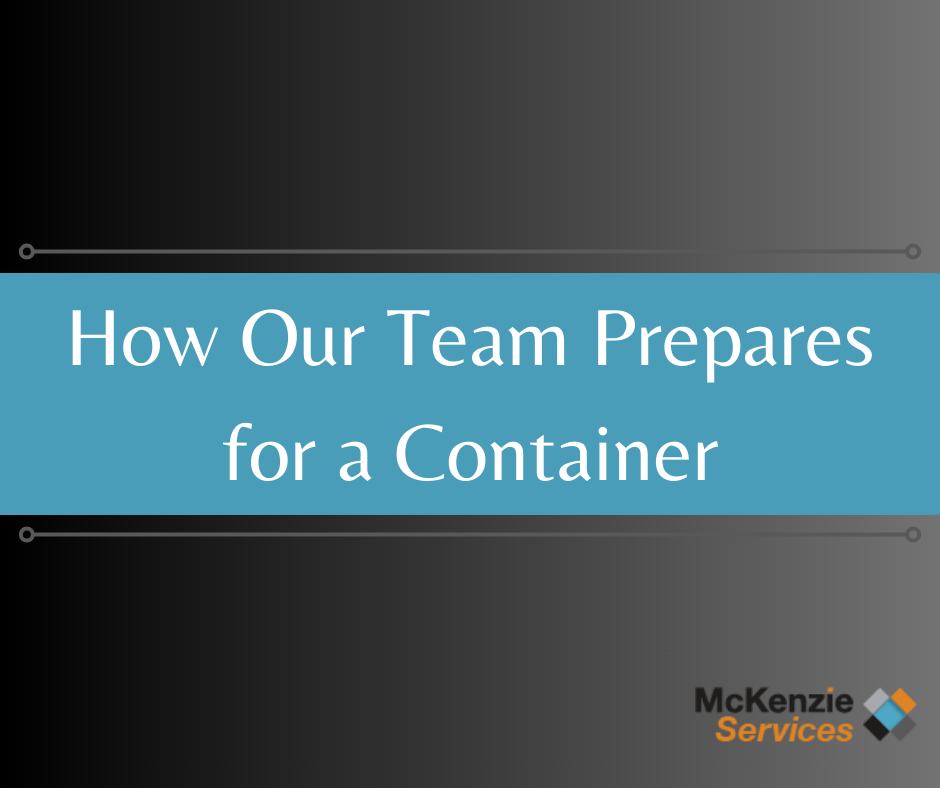Planning to (or interested in) send a container our way? Read on! First things first, we LOVE container deliveries, and we want even more! We have no container receiving fees, and we have the capacity for long term storage. Keep them coming! (And check out this video of us doing a live unload here).
Please note, this post refers to loose carton container unloads and does not apply to palletized deliveries.
We want to break down both the ways we prepare for container deliveries as well as the ways you as our client or future client can help, so that we can continue to receive your containers in a timely fashion.
Without further ado, here is the preparation that goes into receiving a container:
When the Freight Forwarder emails or calls (we prefer email, if they ask), and provides a date and time they would like to deliver, the Account Managers will typically ask for callback information, so we can discuss with the Operations Manager and team. Mostly, we are discussing staffing. This is partially, but not only, because we typically only have an hour to unload a container before you start getting charged for time by the freight forwarder. We also have high safety standards, and some cartons require team lifts.
Once the container is scheduled, we prepare in other ways.
- One way is by doing space management. This means we make sure there is adequate space in our receiving area for your cartons.
- We also decide on how and where to store your cartons, depending on how many you want to ship right away, and the size of the pallets, among other things.
- We decide if we will sort your skus as they come out of the container, or bring them to the receiving area and sort after the unload.
- We won’t bore you with the rest, but there is even more 🙂 We take our work seriously, if you can’t tell.
Why is it important that we have advanced notice of containers?
Until about this time last year, we used to get calls from freight forwarders scheduling container deliveries in advance. We were able to get the last free day, as well as multiple days which the container would be available to deliver. This really helped our team ensure we could receive the container in a timely manner, with enough staff, and time to prepare. However, we’ve noticed a trend recently in which we are not getting calls or emails from Freight Forwarders until the last minute – often, the last free day is the same day or next, and that is when they are hoping to deliver.
We make every effort to accommodate these requests as we value our clients and want to ensure we do not cost our clients extra fees. But in addition to calling late, a lot of forwarders arrive late, or not at all on the scheduled date. This can cause issues as we’ve often rearranged our schedule for the containers to come in the first place.
We understand that ports are congested, and so freight forwarders are basically figuring out which container they’re able to pull next, and calling frantically, hoping we receive it as soon as possible. We also understand that traffic, other deliveries, and miscommunication can get in the way of containers being delivered at the scheduled time.
So, you might be wondering, what does this have to do with you, our current or future client? While we know that you are in no way in control of the Freight Forwarder or the port congestion, there are a few things you can do that will help.
- Submit your inbound carton form as early as possible. If you do not have tracking, that is not an issue. Fill it out anyway and send it over. This helps us know there is a container in the first place, so our team is not blindsided by the call.
- When tracking becomes available to you later on, send it over via email 🙂
- If you have the email or contact info of the FF, introduce us in email or send over their contact info so we can be in touch with them
- Scheduling containers over email is actually easier for us so introducing us via email will help immensely
We hope that the ports can clear up soon and the Forwarders will have an easier time of scheduling containers for their various destinations. Until then, we promise to be patient!

Comments are closed